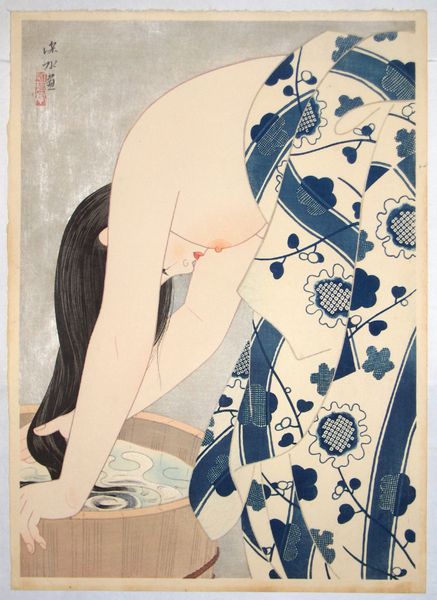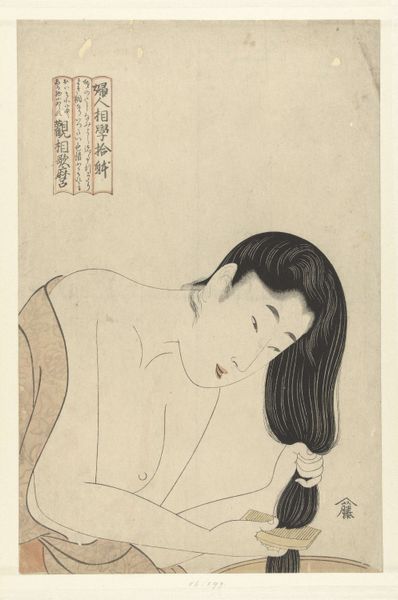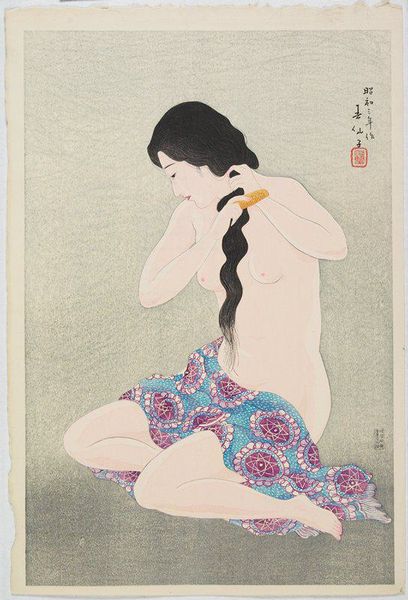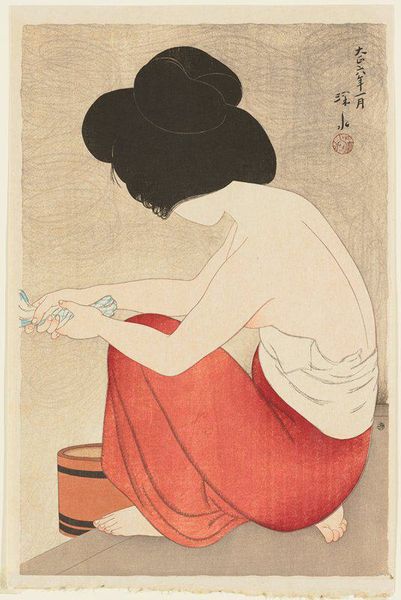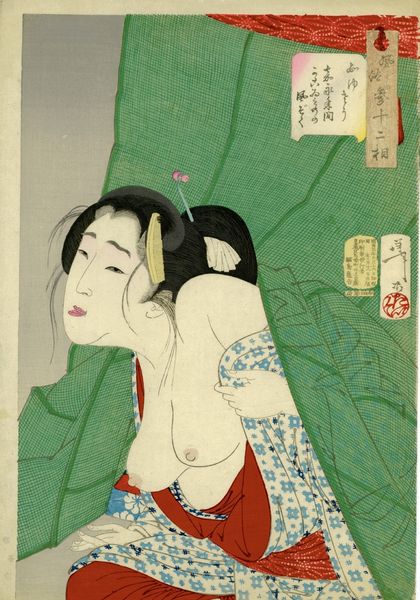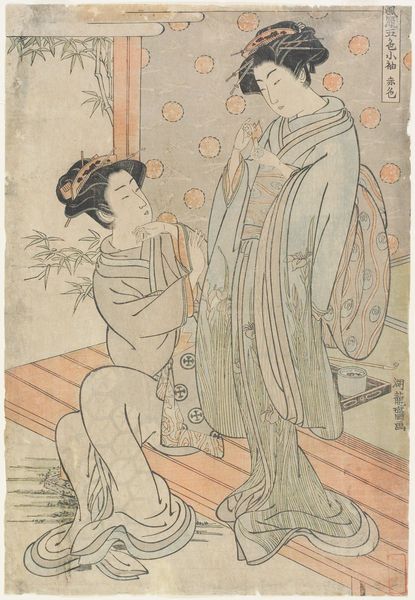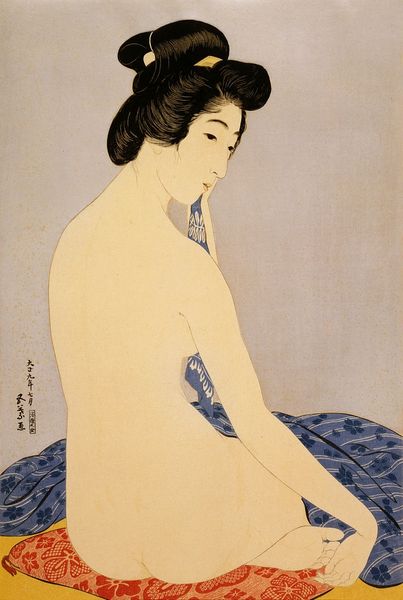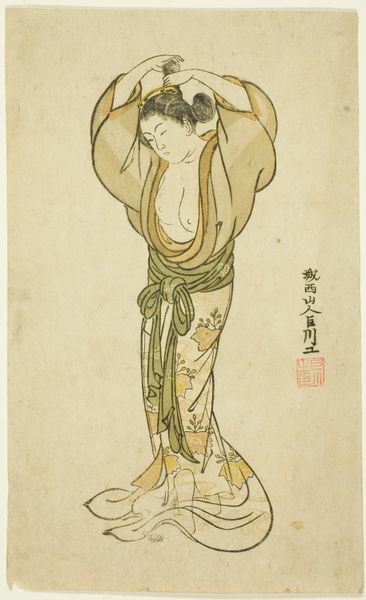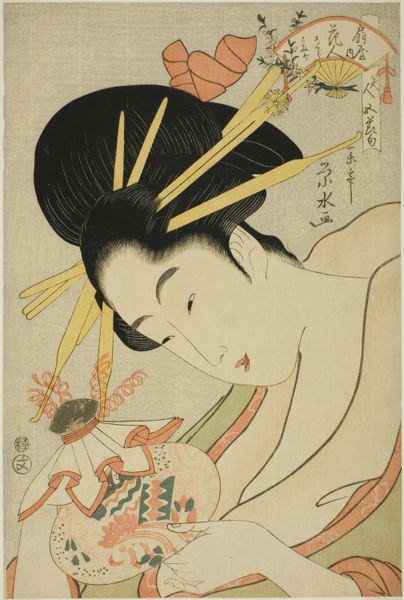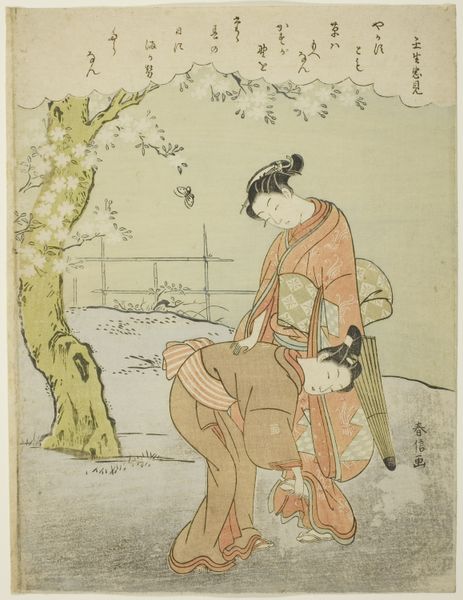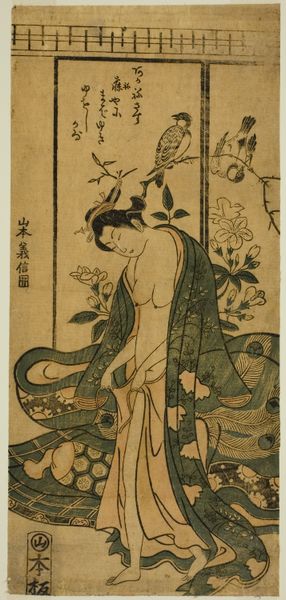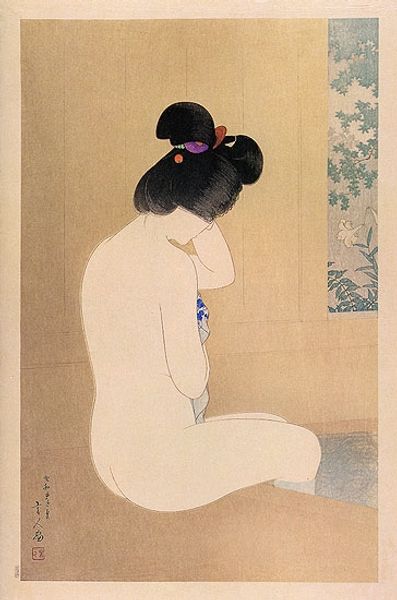
Copyright: Ito Shinsui,Fair Use
Editor: Here we have Ito Shinsui's "The Fragrance of a Bath," a woodblock print created in 1930. I find its soft colors and delicate lines really captivating; the scene is tranquil, yet slightly melancholic. What are your thoughts on it? Curator: What immediately strikes me is how this image reflects a shifting cultural landscape. It’s clearly situated within the *ukiyo-e* tradition – the floating world – that often depicted pleasure and leisure. However, by 1930, Japan was modernizing rapidly, and traditional values were being both embraced and questioned. Editor: In what way does this portrait capture these competing forces? Curator: Well, we see a nude female figure, reminiscent of earlier *ukiyo-e* prints that featured courtesans. But the setting is a natural landscape rather than an urban environment, creating an intriguing tension. The *ukiyo-e* tradition was known to be heavily erotic and was the main subject of much government censorship, particularly nude prints of the Meiji and Taisho eras. Where does Shinsui’s work stand given this social context? Editor: Ah, I see. Is the bath just a way for the artist to represent a figure in a way that's allowed by the society of that time? Curator: Exactly! Also consider the context of display – for whom was this image intended? It might have circulated amongst private collectors or been showcased in exhibitions meant to be shared in a Western art appreciation context, subtly negotiating between Japanese artistic heritage and Western artistic standards. Editor: That's fascinating. I hadn't thought about how much the socio-political context influences what gets depicted and how it's received. Curator: And that consideration is key to the history of this period of artwork.
Comments
No comments
Be the first to comment and join the conversation on the ultimate creative platform.
